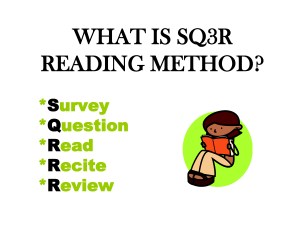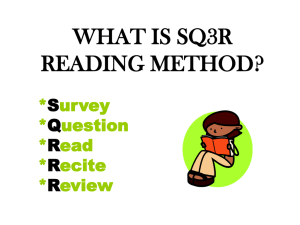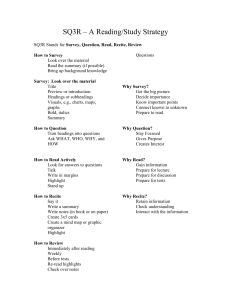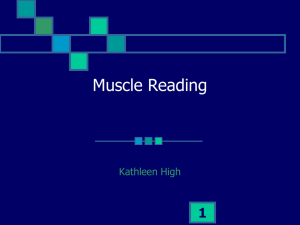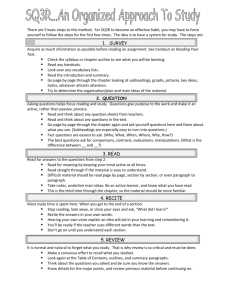SQ3R: Survey, Question, Read, Recite and Review
advertisement
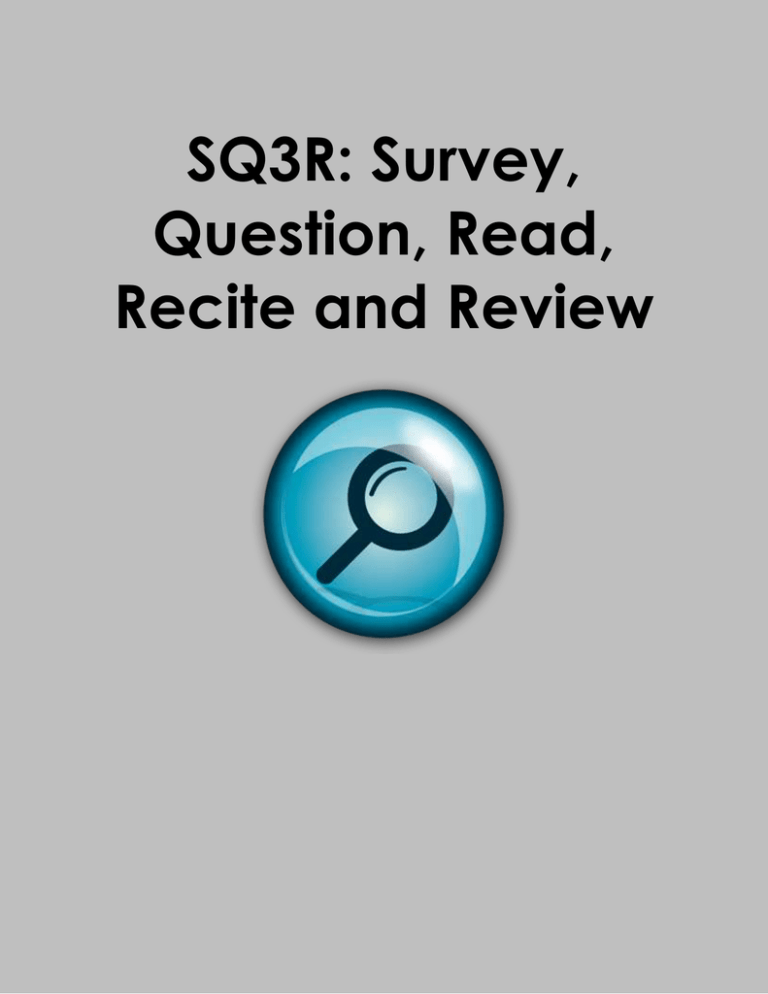
SQ3R: Survey, Question, Read, Recite and Review Survey Before you read, survey the chapter or book that you will be reading. Look at the following: the title, chapter titles and/or headings Read the abstract of an article or the back cover of a book for a general overview Read a review of the text Scan read the introduction Scan through pictures, charts, graphs or maps Question Look for the ‘thesis statement’ thus finding the question that the author had when approaching the research. You should find this in the introduction and in the introductory paragraphs of book chapters. Read a review of the article to see if any deficiencies have been noted in the author’s research. Are there any questions left unanswered? What do you know about the subject? Have you any questions that you are bringing to the text? What do you want to learn when you read the text? Read Look for answers to the questions you first raised. Take notes as you read based on your questions. You should write most of your notes in your own words. This is much better for understanding and learning that transcribing text word for word. Look at past papers to see if any questions correspond to the material you have read and see if you can answer those questions. Recite At the end of a paragraph, summarize aloud what you have read. Use Texthelp to read your text. Use Texthelp to read your own notes or consider recording yourself on a Dictaphone and listening back to your notes. Find rhythmic patterns in your notes in order to commit them to memory or make mnemonics or acronyms. Review After you have read and recited the entire chapter, write questions in the margins for those points you have highlighted or underlined. If you took notes while reciting, write questions for the notes you have taken in the left hand margins of your notebook. Page through the text and/or your notebook to re-acquaint yourself with the important points. Cover the right hand column of your text/note-book and orally ask yourself the questions in the left hand margins. Orally recite or write the answers from memory. Make "flash cards" for those questions which give you difficulty. Develop mnemonic devices for material which need to be memorized. Alternate between your flash cards and notes and test yourself (orally or in writing) on the questions you formulated. Make additional flash cards if necessary. Revision Using the text and notebook, make a Table of Contents - list all the topics and sub-topics you need to know from the chapter. From the Table of Contents, make a Study Sheet/ Spatial Map. Recite the information orally and in your own words as you put the Study Sheet/Map together. Now that you have consolidated all the information you need for that chapter, periodically review the Sheet/Map so that at test time you will not have to cram.
